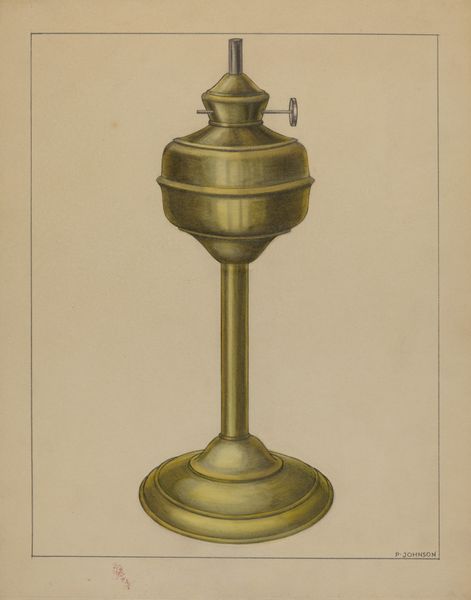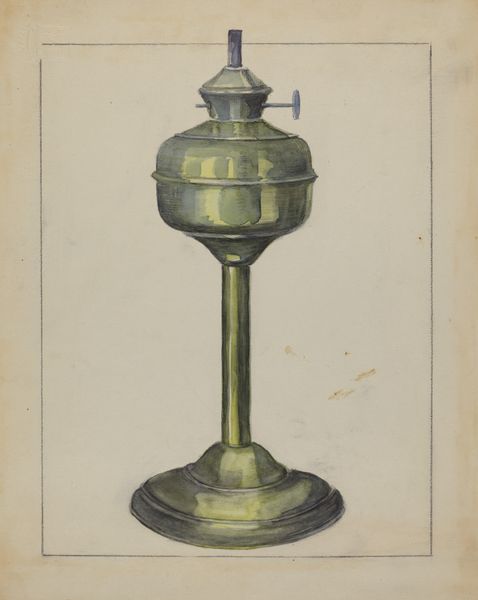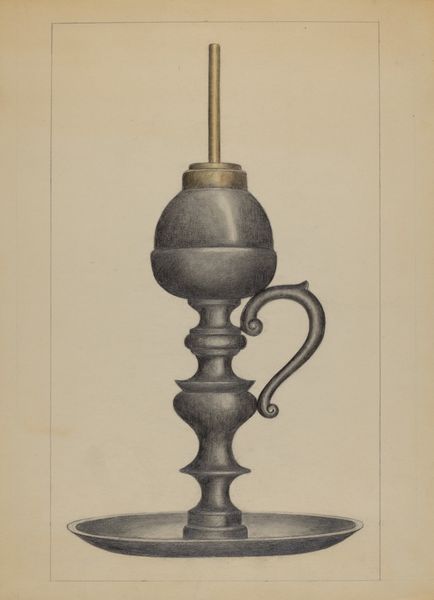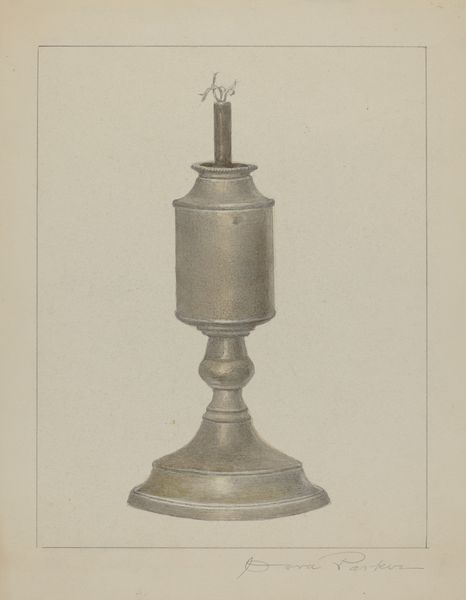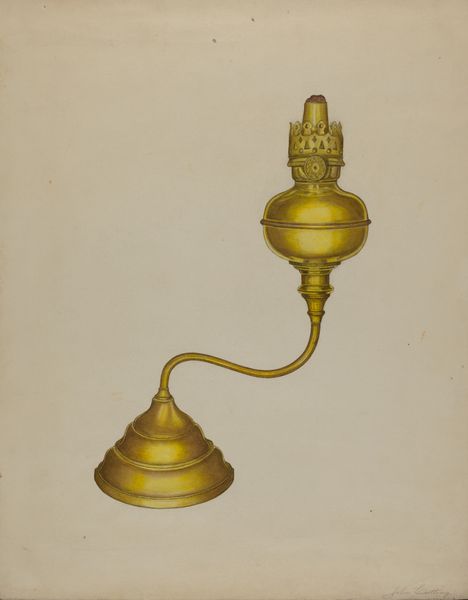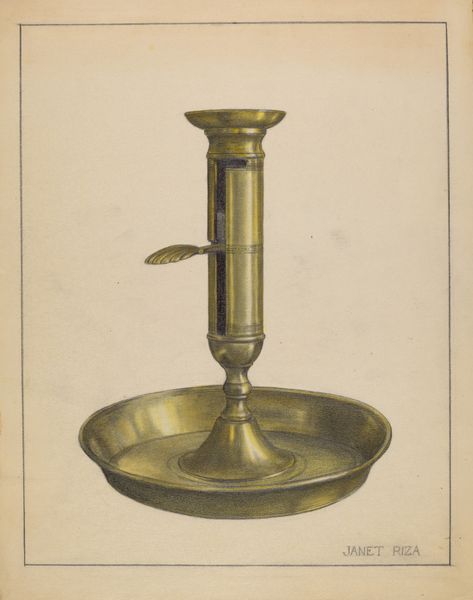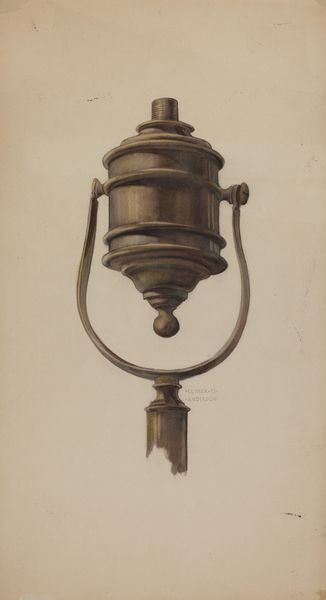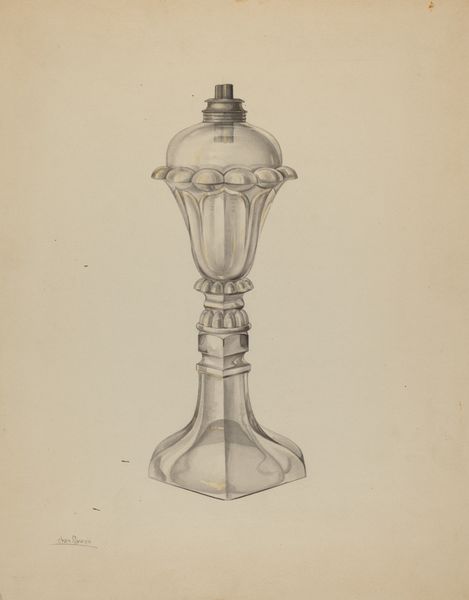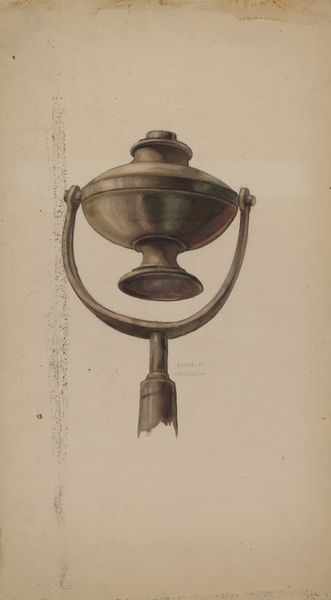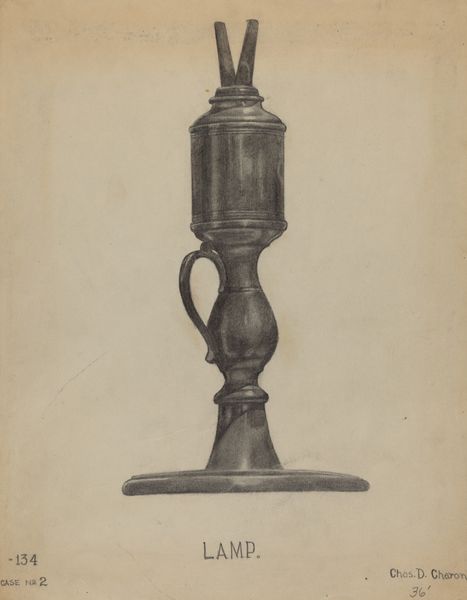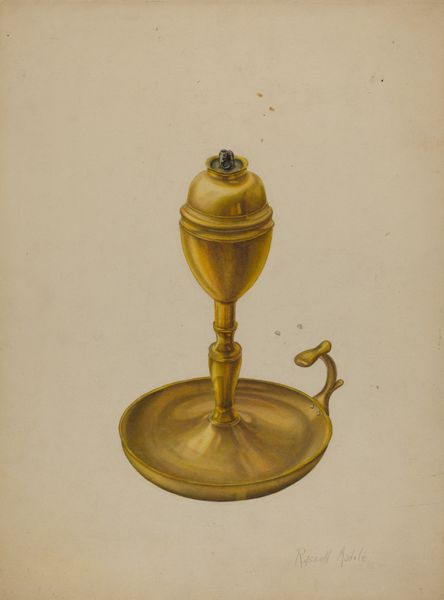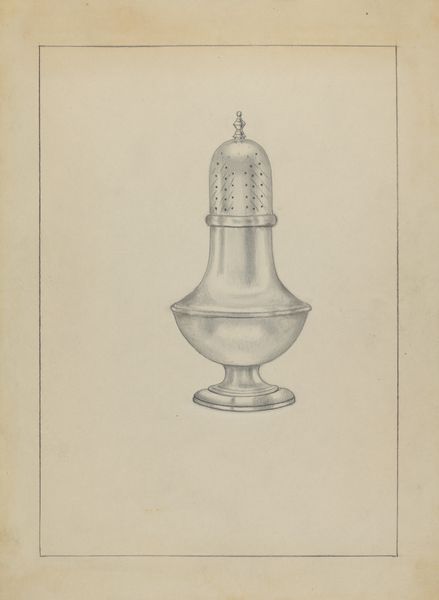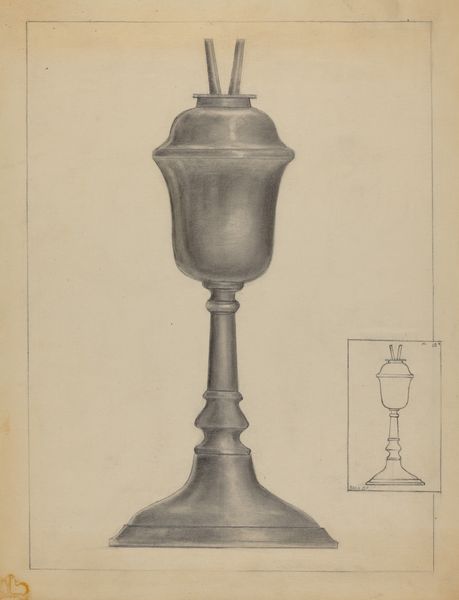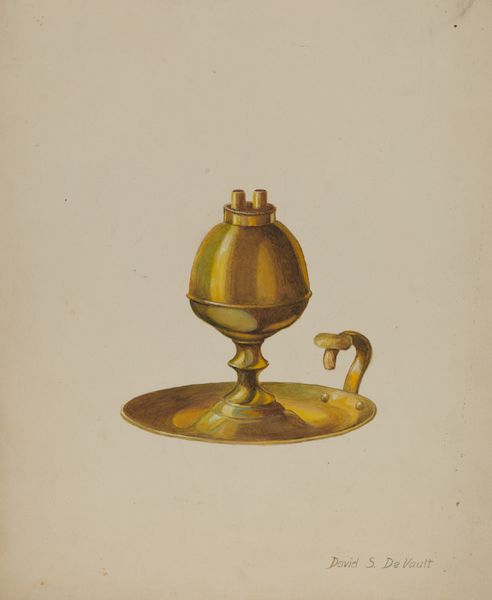
drawing, coloured-pencil
#
drawing
#
coloured-pencil
#
coloured pencil
Dimensions: overall: 29.9 x 22.5 cm (11 3/4 x 8 7/8 in.) Original IAD Object: 5" high; 4" wide
Copyright: National Gallery of Art: CC0 1.0
Curator: I am drawn in by the golden light emanating from this piece. The artist, Janet Riza, rendered "Sperm Oil Lamp," circa 1936, primarily with colored pencils. The luminescence she achieves with this simple medium feels almost alchemic. Editor: It has a utilitarian austerity despite its pleasing forms. A sperm oil lamp represented efficient domestic industry at a historical tipping point, using a resource harvested by an often brutal trade that, even as this work was created, was falling rapidly into obsolescence. Curator: You key in on the oil’s symbolic freight: illumination purchased at great environmental cost. Before it was displaced by kerosene and other, even later, fuels, spermaceti rendered from whale blubber provided a clean-burning and odorless source of light. What values, conscious or not, did such objects embody? Editor: Well, consider the form. See how each element, from the base to the wick adjuster, conveys function with deceptive elegance? Look, even that little conical snuffer has purpose. This isn’t merely about light, but about *making* light efficiently, controlling a valuable commodity. We see the echoes of colonial economics in these forms and material choices. Curator: Ah, yes! The lamp as an altar to colonial values… The symbolism embedded in this tool carries implications far beyond the glow it emits. Light—the enlightenment—secured and fueled through extractive means, a bright sheen that occludes troubling questions. Editor: Absolutely. The act of drawing it, painstakingly rendered with colored pencil in 1936, elevates this functional object—a disposable commodity soon to be obsolete—to an object of enduring consideration. Think about how those delicate strokes, mimicking the metallic gleam, almost elegize that soon-to-be-lost means of production. Curator: Yes, this close attention allows the drawing itself to memorialize a moment. Riza seems to intuit the complex dance between progress and loss, where the very tools that advance society carry latent historical implications. I may never see such a simple object the same again! Editor: Neither will I. By considering how things are made, how they were circulated and consumed, art offers critical insight into societal systems.
Comments
No comments
Be the first to comment and join the conversation on the ultimate creative platform.
